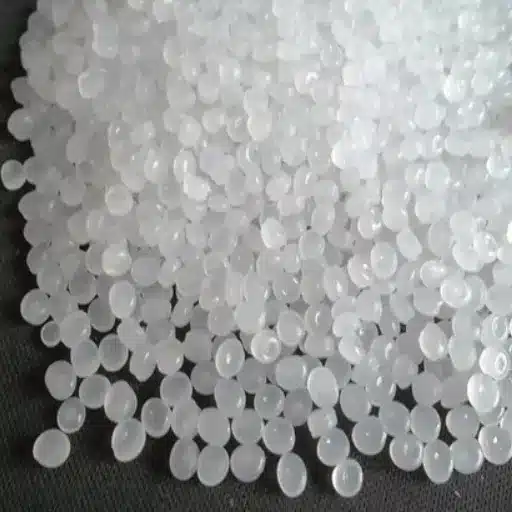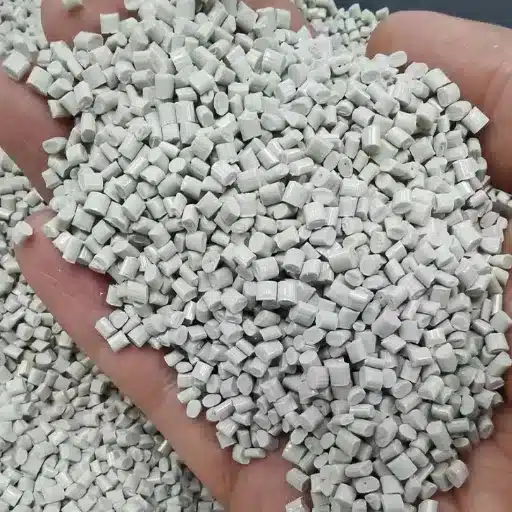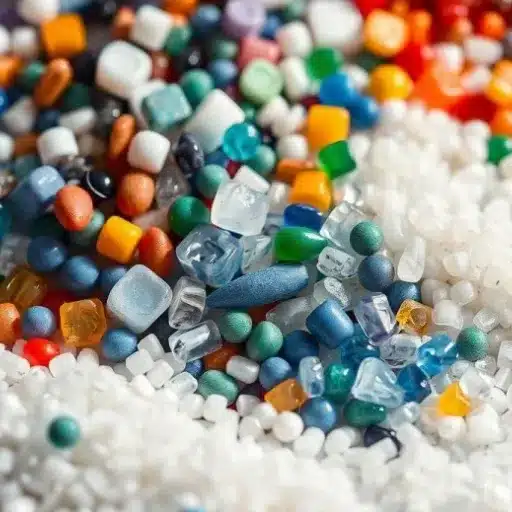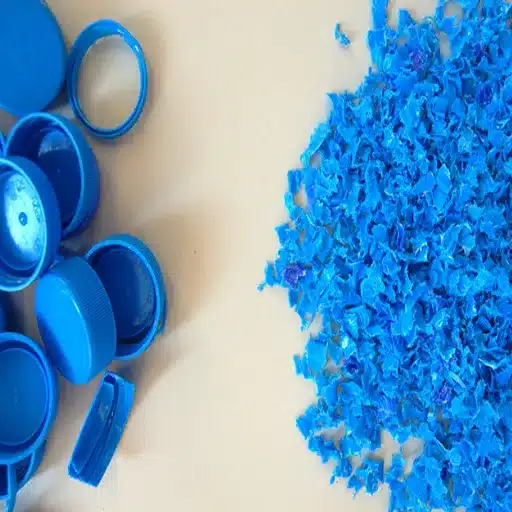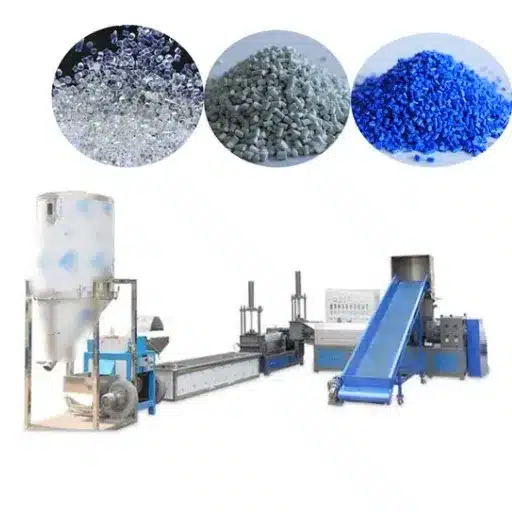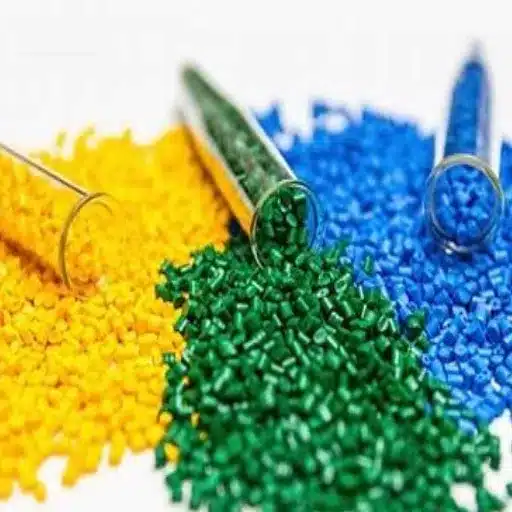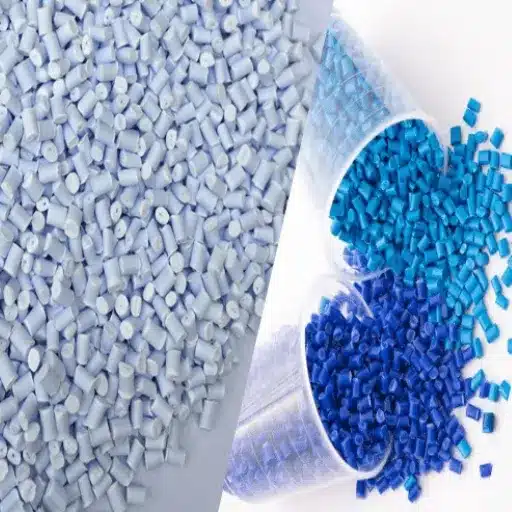Polypropylene pellets are changing the way industries approach sustainability and production efficiency. This lightweight yet durable material has become an environmentally-friendly triple of eco-initiatives, where durability, affordability, and care for the environment come hand-in-hand. PP pellets are the frontrunners toward greener industrial practices with applications ranging from automotive to packaging, without compromising on performance. This article discusses some of the major eco-friendly applications of PP pellets across industries, their benefits, ecological impact, and the future approaches companies could adopt to reduce their footprint.
Understanding PP Pellets and Their Properties
What are Polypropylene Pellets?
Generally referred to as PP pellets, polypropylene pellets are tiny, uniform granules of a thermoplastic polymer with many uses. Being lightweight, chemically resistant, and very durable, PP pellets act as the raw material for various industrial and consumer applications. The pellets are produced through polymerization, where propylene gas is converted into polypropylene resin, which is then shaped into pellets for easy handling, transport, and processing.
Key properties of PP pellets include high impact strength, good moisture resistance, and the ability to resist a broad temperature range, allowing them to be used in various applications, such as automotive parts or food packaging. Being able to add different additives or blend PP pellets with other materials for one or two enhanced properties like UV resistance, flame retardancy, or color customization only multiply their functionality. The extensive use of polypropylene pellets is a testament to their utility in creating sustainable, efficient, and high-performance products across a myriad of industries.
Key Characteristics of PP Pellets
- Lightweight and Durable: Polypropylene (PP) pellets are characterized by their low density, making them very lightweight materials. This property contributes to reduced transportation costs and on the other hand, is a great choice whenever weight counts, like with automotive and aerospace parts. Being lightweight, PP indeed provides a high degree of durability to withstand mechanical stresses.
- Chemical and Moisture Resistance: The PP pellets are highly resistant to numerous chemicals, including acids, alkalis, and organic solvents; thus, they are suitable for industrial and food packaging applications. They also ensure moisture resistance in adverse conditions, such as damp areas and wet surfaces.
- Thermal Stability: PP can endure a considerable temperature range, with the melting point being approximately 130-171°C (266-340°F). This property makes PP resist heat and maintain its structural integrity in environments subjected to high temperatures, such as in automobile engines or during sterilization procedures.
- Recyclability and Being Environment-Friendly: Polypropylene is recyclable, which satisfies the emerging need for sustainable material solutions. By reprocessing used PP materials, one can reduce the accumulation of trash and lessen the environmental impact, thus making it a green option favored by various industries.
- Customizability: PP pellets can be easily customized to meet specific application requirements. They can be altered with additives to confer properties like U. V. stability or fire resistance and flexibility. Such versatility assures relevance to practically every manufacturing sector.
- High Tensile Strength: This property allows PP to withstand tremendous pressures without being deformed. This feature becomes critical when dealing with industrial containers and heavy-duty fibers, which require strength.
Key Takeaway: These properties have essentially made PP pellets a preferred material for engineers, manufacturers, and designers seeking a dependable and efficient solution for modern industrial applications.
Comparison with Other Plastic Pellets
In the general ring of plastic pellets, polyvinyl chloride (PVC), polyethylene (PE), and polystyrene (PS) are of the alternative options; generally, polypropylene shows favorable properties. This contrasts with PE in its flexibility and low density. PP is generally considered to have superior tensile strength and heat resistance, making it perfect where mechanical stresses or increased temperatures are present.
Generally speaking, PVC is used because of its excellent insulation properties and rigidity, although it is less environmentally friendly due to the chlorine involved in its manufacture. PP, being halogen-free, would definitely be a sustainable choice in the presence of industries that take the ecological perspective seriously.
Many are cherished for their low density and excellent insulation properties, mainly used in packaging and disposable items. PP would be a more versatile choice, offering better chemical resistance and fatigue durability, making it ideal for repetitive-use applications such as automotive components and consumer goods.
Comparative Insight: Comparative data indicate that PP offers an optimal balance between cost-effectiveness, mechanical performance, and sustainability, which has cemented its place as a preferred choice in various industrial sectors. The unique combination of properties allows it to fit specific designs for several applications and compete competitively with other common polymer pellets.
Applications of PP Pellets in Industry
Injection Molding with Polypropylene Pellets
Being very versatile, durable, and economically priced, the polypropylene pellets are one of the best options used in injection molding. The process starts with converting the pellets into liquid form. The molten resin is injected into a preconfigured mold, enabling manufacturers to produce complex shapes with great precision and consistency, thereby allowing manufacturers to create all kinds of products.
From designing automobile parts to making food containers to designing medical applications, polypropylene resists chemical reagents, has the highest-impact strength under stress, and retains its physical characteristics even when stressed. In Germany, for example, polypropylene parts are widely employed in bumpers, dashboards, and interior trims because they are very light and yet quite strong.
Recent Advancements: Recent improvements in polymer processing have enhanced PP pellets for injection molding applications. Newer generation polypropylenes now possess high melt flow rates that permit faster cycling times without compromise in product quality. In addition, innovation in mold design and process improvement has paved the way for reducing wastage and lowering energy consumption, maintaining a green perspective in today’s manufacturing practices.
PP Pellets Being Used in Eco-Friendly Products
The aesthetic beauty of polypropylene (PP) pellets has made them a popular choice for eco-creation, given their recycling properties, durability, and lightness. Today, many industries use PP pellets for the production of sustainable alternatives such as reusable containers, packaging, and automotive parts. While a huge chunk of recycled PP pellets keeps manufacturers from relying on virgin plastics, leading to carbon emission reduction and natural resources conservation, advanced PP formulations allow blending with biodegradable or bio-based additives to yield greener options.
For example, the increasing usage of PP pellets in food packaging lessens single-use plastic usage while maintaining product integrity. Similarly, the automotive and construction industries use polypropylene for weight reduction, energy efficiency, and assisting green manufacturing. This previously unused potential for re-melting and reprocessing PP pellets strengthens the case for them as a critical material in advancing a circular economy.
High Impact Applications of PP Pellets
Unique properties include the durability, lightweight nature, and ability to recycle them that mark polypropylene pellets for use in a variety of industrial applications, including those with impact forces. Packaging is a perfect case where PP pellets are applied to make flexible but strong containers, films, and caps, thereby helping industries toward their sustainability goals and reducing waste and energy consumption. For better comprehension, the use of PP-based packaging has actually reduced transportation costs because these plastics are lighter than traditional packaging materials.
Furthermore, in the automobile industry, screw polyolefin comprises an end-use feedstock for plastic components such as dashboards, bumpers, and interior trims. These applications require a strength-to-weight ratio for the polyolefin steroids, where the end-use contributes to slightly enhanced fuel efficiency and reduced CO2 emissions in vehicles. Geotextiles, insulation materials, and piping systems may be manufactured from PP pellets for construction services, where the repellent nature of PP pellets towards moisture and chemicals assures a better lifespan.
Healthcare Applications: Healthcare is yet another field where PP pellets shine in manufacturing syringes, medical vials, and non-woven fabrics for surgical masks and gowns. Their hygienic nature, coupled with resistance to sterilizing agents used in various medical processes, places them in a good position in medical applications. This broad usage therefore suggests how crucial the sustainability and innovation of PP pellets are in diverse areas.
Sustainability and Recycling of PP Pellets
Recycling Processes for Polypropylene Pellets
The recycling of polypropylene pellets is carried out in several critical steps in an attempt to reduce waste and conserve the environment. PP is collected, sorted, and processed to remove contaminants, ensuring the recycled product is considered pure. Often, NIR (near infrared) technology is implemented to isolate and separate polypropylene from other plastics and impurities.
Following sorting, the PP is shredded into smaller pieces and washed to remove any contaminants such as oils, food residues, or adhesive glues. The washed fragments are then melt-extruded into new pellets. Recycled pellets find uses in packaging materials, automotive parts, and construction products.
Recycling statistics tell us what increases the importance of recovery. Some of the latest advancements in chemical processes for recycling include depolymerization, which breaks polyolefins and converts the monomers into virgin-quality materials, thereby reducing the production footprint.
Industry Innovation: Also, through their engineering discipline, the industry engineers have considered the development of energy-efficient results in recycling, which promotes another set of goals of circularity in plastic production. It is through these results that polypropylene will continue to remain a valuable commodity and continue to diminish its environmental impact.
Environmental Impact of Using PP Pellets
The availability of polypropylene (PP) pellets serves as a step toward sustainable manufacturing. By recycling and repurposing pellets, their environmental mass gets reduced. When industries utilize PP pellets, they somehow minimize dependency on the raw material of crude oil, thus they reduce greenhouse gas emissions generated during virgin plastic production. The study has shown that approximately 30% fewer carbon emissions are produced by recycled PP pellets compared to virgin PP pellets.
Environmental Benefits: Also, PS pellets having characteristics such as lighter weight and durability have led to lower transport emissions and enhanced lifecycle for products made in these pellets. These features help reduce plastic waste buildup, one of the key concerns of global environmental management. Among environmental enhancement measures, modern technologies in pellet production emphasize reducing energy use during manufacture. Using PP pellets is a realistic means for industries that want to straddle the dichotomy of global sustainability issues with the need for efficient manufacturing.
Where Are Recyclable PP Materials Headed?
Polypropylene recycling presents an opportunity for greener industrial applications and environmental stewardship. Through improvements in recycling technologies, much of the waste can be recovered, with enhanced polymer qualities as treated; chemical recycling has been modified to break polypropylenes into their base monomers, creating almost-virgin quality material. Meanwhile, mechanical recycling techniques are also advancing towards greater efficiency and reduced contamination.
Despite some downside potential in industries using recycled PP and relying heavily on virgin plastics, the recycled PP market is forecasted to grow significantly over the next decade due to regulatory policies and corporate commitments to reducing plastic waste. It is reported that industries such as automotive, packaging, and consumer goods are increasingly incorporating recycled PP into their products. Meanwhile, research on composites, wherein recycled PP is blended with other additives to enhance strength, durability, and flexibilities for wider applications, continues.
Future Direction: Another driving force in the future evolution of recyclable PP is the establishment of closed-loop systems for the collection, processing, and reuse of PP waste within the same industry or on a specific product line. This approach is motivated by the reduction of resource depletion and the carbon footprint of its production. Based on steady innovation and commitment, recyclable PP materials can serve as a potential cornerstone in building a circular economy with environmental and economic advantages.
Processing Techniques for PP Pellets
Optimal Temperature Settings for PP Processing
The optimal temperature settings for polypropylene (PP) processing will vary depending on the specific application and type of PP used, whether homopolymer or copolymer grades. However, the melting temperature of PP is from 130°C to 171°C (266°F to 340°F), which serves as a point of reference when setting the parameters for processing. Injection molding processes set barrel temperatures between 220°C and 280°C (428°F and 536°F) and prefer mold temperatures to be within a range of 20°C to 80°C (68°F to 176°F), where both cooling and cycle times are balanced.
| Process Type | Temperature Range | Purpose |
|---|---|---|
| Melting Temperature | 130°C – 171°C (266°F – 340°F) | Reference point for processing |
| Injection Molding (Barrel) | 220°C – 280°C (428°F – 536°F) | Material melting and flow |
| Injection Molding (Mold) | 20°C – 80°C (68°F – 176°F) | Cooling and cycle time balance |
| Extrusion | 180°C – 230°C (356°F – 446°F) | Gradual heating and smooth flow |
In extrusion, a temperature profile that gradually heats the material is always the right choice. The zones of the extruder barrel typically experience a temperature increase from about 180°C to 230°C (356°F to 446°F), ensuring the material reaches a smooth melt and flows evenly. Overheating should be avoided at all costs, as it will degrade the polymer chain and cause undesirable effects such as discoloration, weakened mechanical properties, and a lack of finish on the product.
⚠️ Important: Temperature settings require constant consideration and adjustment vis-a-vis the material grade, equipment specifications, and final product requirements. Application of advanced process controls and adherence to these settings will allow for much efficient processing, energy saving, and optimum product performance.
Machine Selection for PP Pellet Production
One must diligently ensure efficiency, cost-effectiveness, and quality outputs in selecting machines for PP pellet production. Throughput, material compatibility, and energy and maintenance consumption must all be given due consideration. Twin screws are generally preferred for their maximal mixing and compounding efficiency in the manufacture of pellets with additives or blends. These machines offer precise control of various parameters, such as temperature, pressure, or screw speed, such that the size and quality of the pellets formed perfectly conform to standard parameters.
Finally, technologies have somehow opened underwater and strand pelletizers as per specific production objectives. Underwater pelletizers are used on production lines that provide a large throughput and are molded for surface finishing. Strand pelletizers perform in smaller-scale production- they are simple in setup and operation. On the other side, automation systems accomplish real-time monitoring and optimization, decreasing losses caused by machine idling and operator error. Proper evaluation of the above features may help manufacturers make the best selection of machines, thereby matching production goals and ensuring reliable and scalable PP pellet manufacturing.
Tips for Achieving Smooth Melt Flow with PP
Achieving smooth melt flow with polypropylene requires careful consideration of both the material properties and parameters of processing. First, consider the melt flow index of the PP resin and ensure it matches the specified MFI for the particular application you have in mind. A relatively low MFI indicates high viscosity and is thus suited for structural parts, while a much higher MFI works well for thin-walled or delicate items. Maintain uniform temperatures throughout the extrusion or molding process to avoid uneven flows or possible thermal degradation of the polymer.
Best Practices for Smooth Melt Flow:
- Use high-grade stabilizers and additives to aid flow by preventing degradation during processing
- Evaluate the extrusion-phase screw configuration and injection-moulding-phase gate location to limit flow resistance and promote evenness
- Maintain good machinery maintenance, including cleaning barrels to dies, to ensure no contaminants or buildup interrupt the flow
- Monitor and record the flow behavior of melts to optimize production by allowing adjustments to temperature, pressure, and material composition
These activities will improve material consistency and production efficiency.
Market Trends and Innovations in PP Pellets
Demand for Polypropylene Pellets at Present
According to research, Polypropylene Pellets have a very high demand due to their versatility and use in myriad industries. The packaging end use provides most of the demand for the polymer due to its lightweight properties and durability, and moisture resistance. These pellets are then molded into food containers, disposable cutlery, and flexible packaging. As a result, consumption has increased with the rise in global populations and the growth of e-commerce markets. On the other hand, polypropylene remains a core product in making parts that reduce the weight of vehicles, thus improving fuel efficiency and maintaining strength in the automotive industry.
Furthermore, sustainability is steadily becoming part of the market paradigm. In the search for recyclable and eco-friendly materials, innovations have been introduced for recycled PP pellets. Industries are increasingly employing these materials to reduce their carbon footprint while ensuring that the materials adhere to performance standards. Hence, the presence of the bioplastics such as bio-based polypropylene is yet another facet to this market, which blend the properties of the traditional ones with the environmentally friendly solutions.
Market Summary: On the whole, industrial growth, sustainability, and innovations in material science all contribute to the present demand for polypropylene pellets in the markets. Enterprises take advantage of all these trends while extending their markets and adapting to the changes in consumer expectations to address environmental concerns.
Innovations in PP Pellet Production Technologies
The manufacture of polypropylene (PP) pellets has undergone several changes, all precipitated by the need for efficiency, sustainability, and enhancing product quality. With improvements in reactor design and polymerization processes, manufacturers have gained more precise control over molecular weight distribution and other polymer properties. These innovations also allow the PP pellets to exhibit better performance for different applications, while at the same time reducing waste during manufacture.
Another development is the use of advanced catalyst systems. These catalysts improve reaction efficiency, so that high yields are obtained with an environmental perspective. Moreover, real-time process monitoring and quality control have evolved to identify divergence in the processes and adjust them accordingly, so that the pellet quality is kept consistent.
Sustainability Focus: A major focus of sustainability-related technologies in recent times is the use of energy conservation systems, closed-loop water recycling processes, and similar methods in manufacturing to reduce resource consumption. The incorporation of recycled feedstocks has emerged as another possibility that facilitates the manufacture of green pellets without adversely affecting the material properties. Such technologies represent the industry’s commitment to designing material solutions required by today’s market for high performance and environmental stewardship.
Future Trends in Eco-friendly PP Applications
The sustainable innovations are determined to shape the future of eco-friendly PP applications and meet the demands of the circular economy. The most significant currents are the growing use of bio-PP derived from renewable resources like corn or sugarcane, muting the dependence on conventional fossil fuels and being more carbon-friendly. Industry reports have forecasted that bio-PP production will grow steadily with the global sustainability agenda.
Quality enhancement in recyclability is another looming trend. Chemical recycling techniques, such as depolymerization, are gaining popularity; they break PP down into its monomers for reprocessing without degradation of performance. These promise to eliminate the cumbersome processes of mechanical recycling and offer virtually boundless opportunities for reusing the material.
Key Future Trends:
- Lightweight Applications: The gradual growth of lightweight PP applications in the automotive and packaging industries will lead to innovations that reduce material requirements and energy needs in transportation. Reports suggest that lightweight PP components may improve the fuel efficiency of a vehicle by up to 20% and lower emissions.
- Smart Additives: The development of smart additives that enhance the biodegradability of polypropylene in controlled environments is another key area of interest. This invention furthers the attempt to address the global plastic-waste catastrophe and provides a closed-loop lifecycle for PP products.
- Market Growth: All these advancements, compounded by strict regulations and consumer preference for greener products, will further diversify and grow eco-friendly PP applications in the coming years.
Reference Sources
- Applications of Recycled PP Pellets – Discusses the use of recycled PP pellets in manufacturing durable and sustainable products.
- Innovative Uses of Plastic Pellets in Various Industries – Explores how plastic pellets contribute to lightweight, cost-effective, and eco-friendly packaging solutions.
- The Sustainability and Recycling of Polypropylene – Highlights the role of polypropylene in sustainable packaging and its recyclability.
- Eco-friendly Additives for Biodegradable Polyesters – Provides insights into eco-friendly additives and their impact on sustainable materials.
- Virgin & Recycled PP Granules Uses | Comprehensive Guide – This guide offers a detailed overview of the applications of PP granules in various industries, including eco-friendly packaging and construction.
Frequently Asked Questions (FAQs)
What are polypropylene pellets, and what are they used for?
The polypropylene pellets are thermoplastic resin widely used for various applications. These are known for their lightweight property of approximately 2 lbs per bag. These powders are injector-molded to make objects ranging from containers to automotive parts. Polypropylene can be molded into complicated shapes while retaining good quality and durability. Also, since pp powders can be recycled, myriad companies use this to promote an eco-friendly environment by reducing waste.
What is the density of polypropylene pellets?
Typically, polypropylene pellets have a density ranging from 0.90 to 0.91 g/cm³, which is extremely low compared with those of other materials. Consequently, the low density renders the product very lightweight, easy to handle, and fast to transport in bulk bags. Businesses need to know the density to determine shipping costs accurately, particularly when larger quantities — i.e., 10lbs or more—are involved. Density also influences processing and performance characteristics during injection molding and extrusion applications.
How does one recycle polypropylene pellets?
The recycling of polypropylene pellets involves collecting scraps and waste from production processes, which can then be reprocessed into new pellets. Many facilities would accept recyclable polypropylene, which is also called recycled polypropylene pellets, to reduce environmental impacts. The typical processes for recycling would include shredding of the material, extrusion, and pelletizing. So, apart from conserving raw materials, recycling cuts down the cost of production for companies. Recycled polypropylene serves as a cheaper substitute, helping companies maintain quality while being environmentally conscious.
What are the benefits of the use of black polypropylene pellets?
Black polypropylene pellets offer multiple advantages, among others: higher aesthetic appeal and better resistance to UV degradation. This color hides any discoloration that might occur with time, making it suitable for outdoor use. At the same time, the pellets maintain high impact strength and mechanical properties due to their natural form. Businesses might, therefore, use black polypropylene where elegance is required without compromising performance. Additionally, the choice of black pellets reduces inventory management complexity during production.
Are the polypropylene pellets suitable for handling high temperatures?
Polypropylene pellets are used for high-temperature applications, with only some limits on thermal resistance. Typically, they can withstand up to 100°C (212°F) without allowing much degradation. Otherwise, polypropylene resin can be modified or alternative materials can be used to attain higher temperature resistance. In fact, it is an essential consideration in the automotive and electronic industries where temperature changes prevail. Proper processing methods are essential to reinforce the strength of polypropylene when subjected to thermal stress.
What is the price range for bulk polypropylene pellets?
The price of polypropylene pellets can change considerably depending on the quality of the product offered, the supplier, and the market demand situation. Bulk prices generally vary between $0.50 and $1.50 per pound, with larger discounts for bigger orders. Bulk purchasers, that is, orders of 10 lbs or more, tend to find better pricing options. Additional factors such as delivery costs and minimum order quantities can influence allegations. Being familiar with the market trends and establishing a reliable supply chain can help businesses find the best price of polypropylene.

